Phil Merilees (1940 - 2018) Canada
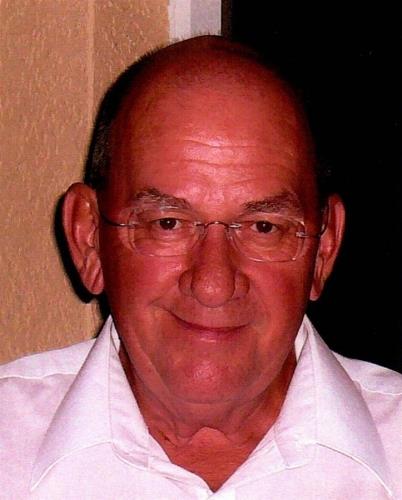
Written by Ian Rutherford FCMOS, Ph.D. for CMOS Bulletin SCMO 4 April, 2018
On March 7th 2018 Dr. Philip E. Merilees passed away peacefully, surrounded by loving family in the hospital near his home in Bonita Springs, Florida, following a short battle with cancer and its complications.
Dr. Merilees was an exceptional scientist and scientific leader in both Canada and the USA. He was a brilliant theoretician who made many contributions to our understanding of atmospheric and oceanic fluid dynamics. He was a gifted teacher, supervisor and mentor of students who became an exceptional manager of research and of researchers. He will be sorely missed by a wide circle of colleagues, students and researchers whom he supervised and by all those whose lives he touched.
Phil, as he was known to nearly everyone, was born in Chatham Ontario and grew up and received his early education there and in Montreal. He obtained a BSc in Physics in 1960 from Sir George Williams, now a part of Concordia University, and an MSc in Physics 1962 from Carleton University in Ottawa. He joined the Meteorological Service of Canada (MSC) and studied Meteorology at McGill University, receiving a PhD in 1966.
Phil was a true mathematical physicist who combined physical insight with the mathematical skill to describe atmospheric and oceanic fluid dynamical and thermodynamic processes mathematically and to manipulate the equations in order to provide new physical insights. He could have become a leading contributor to more fashionable fields like particle physics, which he eschewed because of the runaway proliferation (in his view) of particle types. Instead he became fascinated by geophysical fluid dynamics and the many problems of understanding the development of structured flow patterns that arise from the chaotic patterns of random turbulence, as exemplified by the so-called dishpan experiments.
Click here to read the full obituary
Brian Merrilees (1938 - 2013) Canada
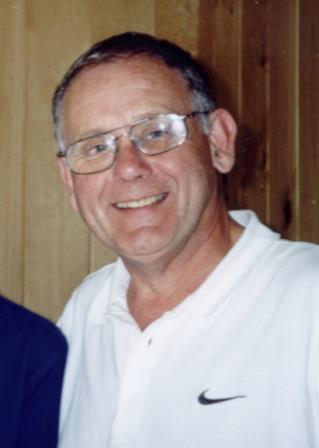
The Merrilees Family Association deeply regrets the death of professor Brian Merrilees who was until recently Merrilees chieftain for Eastern Canada.
Brian was a New Zealander from Otago: a graduate of Otago Boys High School, of the University of Otago, and of the Sorbonne in Paris where he gained his doctorate. He spent his professional life at the University of Toronto as a highly respected scholar, teacher and administrator at the Center for Medieval Studies. The University writes that he was a brilliant scholar of Old French as well as a compassionate and generous colleague who will be deeply missed by those who knew him. He also served a term as Vice-Provost of the University, and was made a Fellow of the Royal Society of Canada.
Inspired by his teachers at Otago, Brian built an enviable international reputation as a medievalist through editions and studies of Anglo-Norman texts (works written in the Norman French language used in England after the Norman conquest). He was also an historian of Anglo-Norman language and literature.
His edition of the Anglo-Norman Voyage of Saint Brendan proved topical, for it appeared around the same time in the late 1970s as Tim Severin undertook his "Brendan Voyage", which retraced the adventures of the early Irish saint in a modern reconstruction of his sailing vessel.
In the latter part of his career, Brian focused on the significance of the earliest French-Latin Dictionaries for education and learning in medieval France and England: with two colleagues editing and publishing a very large dictionary, the Dictionarius of Firmin Le Ver compiled in A.D. 1440 in Abbeville in Northern France. He remained active in research after his retirement from teaching and administration in 2004, up until the time of his last illness.
From early days Brian was an athlete as well as an academic, at Otago Boys High School he was dux of the school, a "Quiz Kid", senior sprint champion, and holder of the NZAAA national junior pole vault title. He supported the Toronto Track Club for 20 years, and celebrated his 70th birthday with a pole-vault. We will remember him best for his enthusiasm and ability at the golf tournaments held during our Gatherings.
We all knew Brian as a generous and loving spirit who treasured his association with Merrilees worldwide, and worked hard to bring people together. He was a unique and dear friend who will be sadly missed.
Brian is survived by his wife Pat and two daughters Katherine and Elizabeth, in Toronto.
Count Robin de la Lanne-Mirrlees (1925 - 2012)
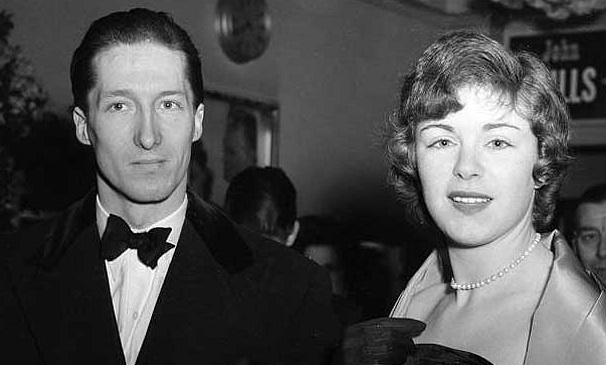
Robin de la Lanne Mirrlees with Princess Margarethe of Wurttemberg at the premiere of 'The Long Memory' at the Leicester Square Theatre. 22 January 1953 Photo: TOPFOTO
In real life Count Robin was the laird of the Hebridean island of Great Bernera and claimant to a principality in Dalmatia. In fiction, however, Mirrlees was Sir Hilary Bray, Bt, a genealogist with the College of Arms whose identity Bond assumes to trace the criminal mastermind Ernst Stavro Blofeld in On Her Majesty's Secret Service.
In 1960, when Fleming was researching the heraldic background for the book, Mirrlees was Rouge Dragon Pursuivant at the College. After agreeing to collaborate with Fleming, he was featured in the novel under the heraldic pseudonym Sable Basilisk. The association was commemorated in a privately produced book, Sable Basilisk, which contained notes and correspondence between Mirrlees and Fleming from their spell of joint research.
Mirrlees' influence on Fleming ran deep. Mirrlees claimed descent from an ancient Basque family, whose members were said to be born without earlobes. Fleming gave this unusual deformity to Blofeld. It was probably also Mirrlees who came up with the Bond family motto: "The World is Not Enough", later used as the title of a film in the 007 canon.
Robin Ian Evelyn Grinnell-Milne was born on January 13 1925, son of Duncan Grinnell-Milne, a much-decorated First World War fighter pilot who was shot down and taken prisoner, only to escape and rejoin his squadron, and whose memoirs, An Escaper's Log, are considered a classic account of derring-do.
Robin's godfather was the 11th Duke of Argyll. His parents divorced in 1927 and his mother subsequently married Major General William Mirrlees. In recognition of this, and of his mother's aristocratic Basque forebears, he later changed his name to Robin de la Lanne-Mirrlees. Hope Mirrlees, the writer of fantasy fiction, was his step-aunt.
After being educated at the English School, Cairo, and in Paris, he went up to Merton College, Oxford. During the Second World War he served in the Royal Artillery in India, rising to the rank of captain.
Post-war he embarked upon a rococo career, entering the College of Arms in 1952. In his capacity as Rouge Dragon Pursuivant of Arms in Ordinary, he was in attendance on the Queen at the Coronation. In 1959 he was invested as a Knight of Honour and Devotion of the Order of Malta. From 1962 until 1967 he served as Richmond Herald of Arms.
Less formally, Mirrlees was a well-known debs' delight; among the glamorous young women to be seen on his arm was Fiona Campbell-Walter, who later married Baron Thyssen, the wealthy industrialist and art collector.
During his time at the College of Arms, Mirrlees became increasingly fascinated by the nobility of his maternal ancestors - they had styled themselves Counts - and in 1964 the Republic of San Marino granted him this title.
In 1968 he took steps to put his title beyond dispute by securing confirmation of it from Umberto II of Italy who, as a former reigning monarch never having abdicated, retained the power to confer nobility. More controversially, Mirrlees also claimed that, in 1967, King Peter II of Yugoslavia, to whom he was an honorary aide-de-camp, created him Prince of Incoronata, on the Dalmatian coast. In 1975 he was also recognised by the Lord Lyon King of Arms as feudal Baron of Inchdrewer, after the dilapidated 16th-century fortress, Inchdrewer Castle in Banffshire, that Mirrlees owned.
Later financial problems would prevent Mirrlees from restoring the castle to a proper state of repair. But until then he was an even more prolific acquirer of houses than of titles. Apart from Inchdrewer, he owned a house in Holland Park, Ratzenegg Castle in Austria and a villa at Le Touquet.
Yet his real home was the island of Great Bernera, home to 250 people off the west coast of Lewis in the Outer Hebrides, which he bought in 1962. In an era when Scottish lairds were much demonised, Mirrlees was a popular landlord, only raising the rents once in 41 years (necessity forced him to do so again in 2003). Yet his benevolent feudal rule was not entirely free of disputes with the locals. In the late 1990s he provoked opposition when he proposed to open a drying-out clinic for alcoholics on the island which he wished to call a "personal rediscovery centre".
Mirrlees's later years were clouded by the huge financial losses he suffered through Lloyd's. He managed to pay off more than £2m worth of debt by selling several of his properties, including his London house, his Austrian castle and a small island off Great Bernera. But he suffered a further setback in 2003 when burglars raided his Le Touquet villa and made off with £250,000 worth of antiques, all uninsured. Mirrlees said at the time: "As a Buddhist I have not allowed myself to become too attached to material things, but I am extremely angry.
His adopted faith was the cause of another row with locals on Bernera when he opposed Sunday ferry services on the grounds that one day per week should be reserved for reflection (among the recreations he listed in Who's Who were fox-hunting and mystic philosophy).
Indeed, Mirrlees was never shy of courting controversy. Despite his royal connections he conceived a violent dislike of the Prince of Wales, whom he described in 2003 as "an absolute disgrace". In 2005, on the grounds that "any old fool can be a prince", he sent a circular letter round his acquaintances announcing his assumption of his Yugoslav title Prince of Incoronata, though many authorities disputed its validity.
Mirrlees's last campaign was against doctors' ties. This resulted from his own experience of hospital infection. In February 2004 he was admitted to Hammersmith Hospital following a stroke. There he contracted the "superbug" MRSA, and was convinced he had been infected by bacteria on doctors' ties. He demanded that the neckwear should be banned. Following his hospitalisation he lived in a care home on Great Bernera, while continuing to display the spirited eccentricity that had distinguished him throughout his life.
He was married, very briefly, to a former nurse. From a long relationship with Duchess Margarethe of Wurttemberg, a granddaughter of Tsar Ferdinand I of Bulgaria, he had a son, Patrick Grinnell-Milne de la Lanne-Mirlees, who in 2006 became the mayor of Delmenhorst in Lower Saxony.
Caroline Merrylees (1940 - 2009) Australia
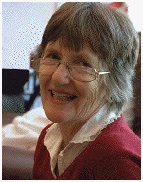
Caroline was the wife of Australia Chieftain Ian Merrylees, and together they produced and circulated a regular newsletter to MFA members. Caroline was an avid researcher for the MFA and undertook the masssive task of updating and combining Merrilees family trees prior to the 3rd International Gathering in Dunedin in 2008.
Since then, despite ongoing health issues, she completed a further round of DNA testing to consolidate the MFA family tree database.
The loss of Caroline will be felt not only by the MFA but also among her home community where she was widely known. In the 2006 Queen's Birthday honours she was awarded the Order of Australia Medal (OAM) for her services to the communities of Hay and Carrathool as an archivist, author and fund raiser
She was also an accomplished artist and her sketch of the Merrylees Cottages was printed on a postcard to raise funds for the MFA. Her legacy to the MFA is a global Merrilees Family Tree and a treasure-trove of Merrilees family history, passionately researched and compiled over several decades.
Caroline died on 7th August 2009 after a prolonged illness.
The Hay Shire Council has honoured Caroline by naming a room after her in the Hay Library. The Caroline Merrylees Local History Room was officially opened by the Hay mayor and Caroline's husband Ian in May 2010 before an enthusiastic crowd of family and friends.
The plaque outside the room commemorates the huge contribution that Caroline made over many years to the Hay Historical Society and the Hay community in general.Ron Merrylees (1922 - 2009) England
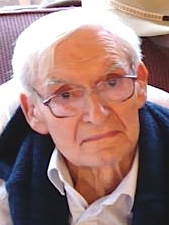
Ron became a family history enthusiast after retiring from a career as an electrical engineer, which saw him become Senior Electrical Engineer at Hull Docks. He served in the British Army's Royal Engineers from 1943 - 1947 rising to the rank of captain. He was married to Olive for 51 years before she predeceased him in 1996.
Ron enjoyed many visits to the London and Edinburgh Records Offices, sharing his 'finds' with other MFA researchers. He discovered the Testament Dative of James and Elspeth Mirrieleyes (the most recent common ancestor of all Merrilees clan members who died in 1663) and had it translated into modern English. He also researched and wrote the article on the origins of our Merrilees surname, which is published on this website.
Ron died in Sheringham on 19th September 2009. He is survived by his son, three grandchildren and a great grandson.